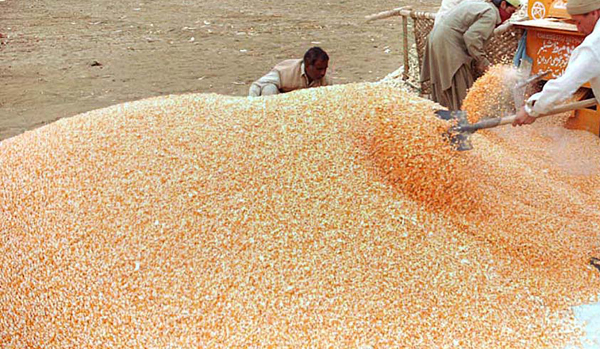Thursday, 12 November 2015 00:52
 CHICAGO: US corn and soybean futures edged higher on Wednesday in a bargain-buying and technical bounce from contract lows posted a day earlier due to bearish U.S. Department of Agriculture supply and demand forecasts.
CHICAGO: US corn and soybean futures edged higher on Wednesday in a bargain-buying and technical bounce from contract lows posted a day earlier due to bearish U.S. Department of Agriculture supply and demand forecasts.
Wheat was mixed in muted trading after prices hit two-week lows on Tuesday, with a sluggish export pace overhanging the market.
The USDA on Tuesday forecast the U.S. soybean harvest as the largest ever, while the corn crop was seen at the third largest on record. The agency also bumped up global stocks of corn, soybeans and wheat to record highs.
Chicago Board of Trade December corn rose 2-1/2 cents, or 0.7 percent, to $ 3.61-1/2 a bushel by 11:56 a.m. CST (1756 GMT) while January soybeans gained 2 cents, or 0.2 percent, to $ 8.57-1/2 a bushel. CBOT December wheat was unchanged at $ 4.90-3/4 a bushel.
“The little bit of support is from a technical rebound due to the increase in short positions that we saw yesterday in open interest,” said Terry Reilly, senior commodities analyst with Futures International.
As futures prices dropped on Tuesday, open interest grew, according to exchange data. The day’s trading volume, meanwhile, was near a record high in several commodities, in stark contrast to Wednesday’s slow trade.
“The South Korean corn tenders are giving a little bit of life to the corn market, but people are otherwise just talking about weather issues,” Reilly said, citing El Nino impacts on global vegetable oils producers.
Several grain importer groups in South Korea set tenders overnight to buy corn on the global market, seizing upon a drop in prices after the USDA boosted key production and stocks figures and cut demand in a monthly report on Tuesday.
U.S. wheat export demand remained limited by ample supplies of less expensive grain elsewhere in the world.
There were no offers of U.S. wheat in the latest international tender by Egypt’s state buyer GASC, its second tender in as many days.
The market largely shrugged off a trucker strike in Brazil as impacts on corn and soybean shipments to export terminals was very limited.




























